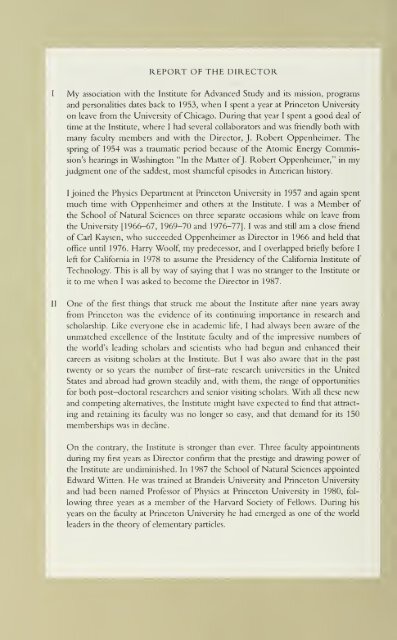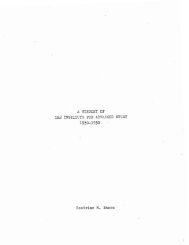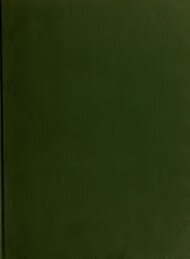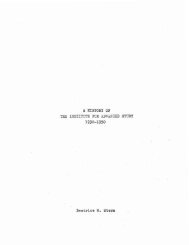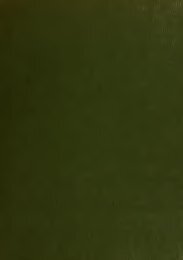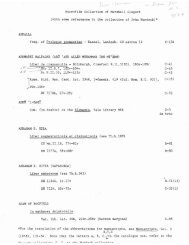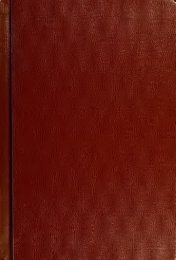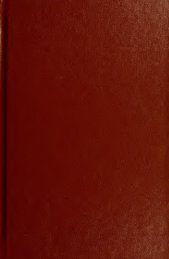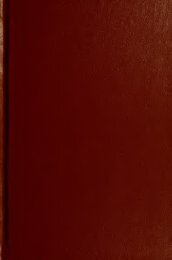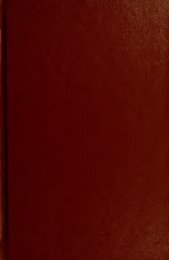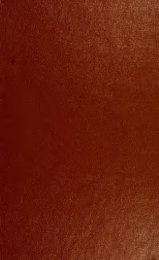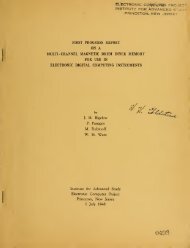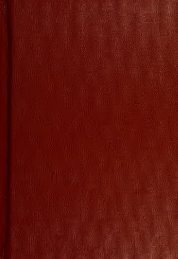Report for the Academic Years 1987-1988 and 1988-1989
Report for the Academic Years 1987-1988 and 1988-1989
Report for the Academic Years 1987-1988 and 1988-1989
Create successful ePaper yourself
Turn your PDF publications into a flip-book with our unique Google optimized e-Paper software.
REPORT OF THE DIRECTOR<br />
My association with <strong>the</strong> Institute <strong>for</strong> Advanced Study <strong>and</strong> its mission, programs<br />
<strong>and</strong> personalities dates back to 1953, when 1 spent a year at Princeton University<br />
on leave from <strong>the</strong> University of Chicago. During that year I spent a good deal of<br />
rime at <strong>the</strong> Institute, where I had several collaborators <strong>and</strong> was friendly both with<br />
many faculty members <strong>and</strong> with <strong>the</strong> Director, J. Robert Oppenheimer. The<br />
spring of 1 954 was a traumatic period because of <strong>the</strong> Atomic Energy Commission's<br />
hearings in Washington "In <strong>the</strong> N4atter ofj. Robert Oppenheimer," in my<br />
judgment one of <strong>the</strong> saddest, most shamefril episodes in American history.<br />
I joined <strong>the</strong> Physics Department at Princeton University in 1957 <strong>and</strong> again spent<br />
much time with Oppenheimer <strong>and</strong> o<strong>the</strong>rs at <strong>the</strong> Institute. 1 was a Member of<br />
<strong>the</strong> School of Natural Sciences on three separate occasions while on leave from<br />
<strong>the</strong> University [1966-67, 1969-70 <strong>and</strong> 1976-77]. I was <strong>and</strong> still am a close friend<br />
of Carl Kaysen, who succeeded Oppenheimer as Director in 1 966 <strong>and</strong> held that<br />
office until 1 976. Harry Woolf my predecessor, <strong>and</strong> I overlapped briefly be<strong>for</strong>e I<br />
left <strong>for</strong> Cali<strong>for</strong>nia in 1978 to assume <strong>the</strong> Presidency of <strong>the</strong> Cali<strong>for</strong>nia Institute of<br />
Technology. This is all by way of saying that I was no stranger to <strong>the</strong> Institute or<br />
it to me when I was asked to become <strong>the</strong> Director in <strong>1987</strong>.<br />
One of <strong>the</strong> first things that struck me about <strong>the</strong> Institute after nine years away<br />
from Princeton was <strong>the</strong> evidence of its continuing importance in research <strong>and</strong><br />
scholarship. Like everyone else in academic life, I had always been aware of <strong>the</strong><br />
unmatched excellence of <strong>the</strong> Institute faculty <strong>and</strong> of <strong>the</strong> impressive numbers of<br />
<strong>the</strong> world's leading scholars <strong>and</strong> scientists who had begun <strong>and</strong> enhanced <strong>the</strong>ir<br />
careers as visitmg scholars at <strong>the</strong> Institute. But I was also aware that in <strong>the</strong> past<br />
twenty or so years <strong>the</strong> number of fint—rate research universities in <strong>the</strong> United<br />
States <strong>and</strong> abroad had grown steadily <strong>and</strong>, with <strong>the</strong>m, <strong>the</strong> range of opportunities<br />
<strong>for</strong> both post—doctoral researchers <strong>and</strong> senior visiting scholars. With all <strong>the</strong>se new<br />
<strong>and</strong> competing alternatives, <strong>the</strong> Institute might have expected to find that attract-<br />
ing <strong>and</strong> retaining its faculty was no longer so easy, <strong>and</strong> that dem<strong>and</strong> <strong>for</strong> its 150<br />
memberships was in decline.<br />
On <strong>the</strong> contrary, <strong>the</strong> Institute is stronger than ever. Three faculty appointments<br />
during my first years as Director confirm that <strong>the</strong> prestige <strong>and</strong> drawdng power of<br />
<strong>the</strong> Institute are undiminished. In <strong>1987</strong> <strong>the</strong> School of Natural Sciences appointed<br />
Edward Witten. He was trained at Br<strong>and</strong>eis University <strong>and</strong> Princeton University<br />
<strong>and</strong> had been named Professor of Physics at Princeton University in 1980, fol-<br />
lowing three years as a member of <strong>the</strong> Harvard Society of Fellows. During his<br />
years on <strong>the</strong> faculty at Princeton Univenity he had emerged as one of <strong>the</strong> world<br />
leaden in <strong>the</strong> <strong>the</strong>ory of elementary particles.


